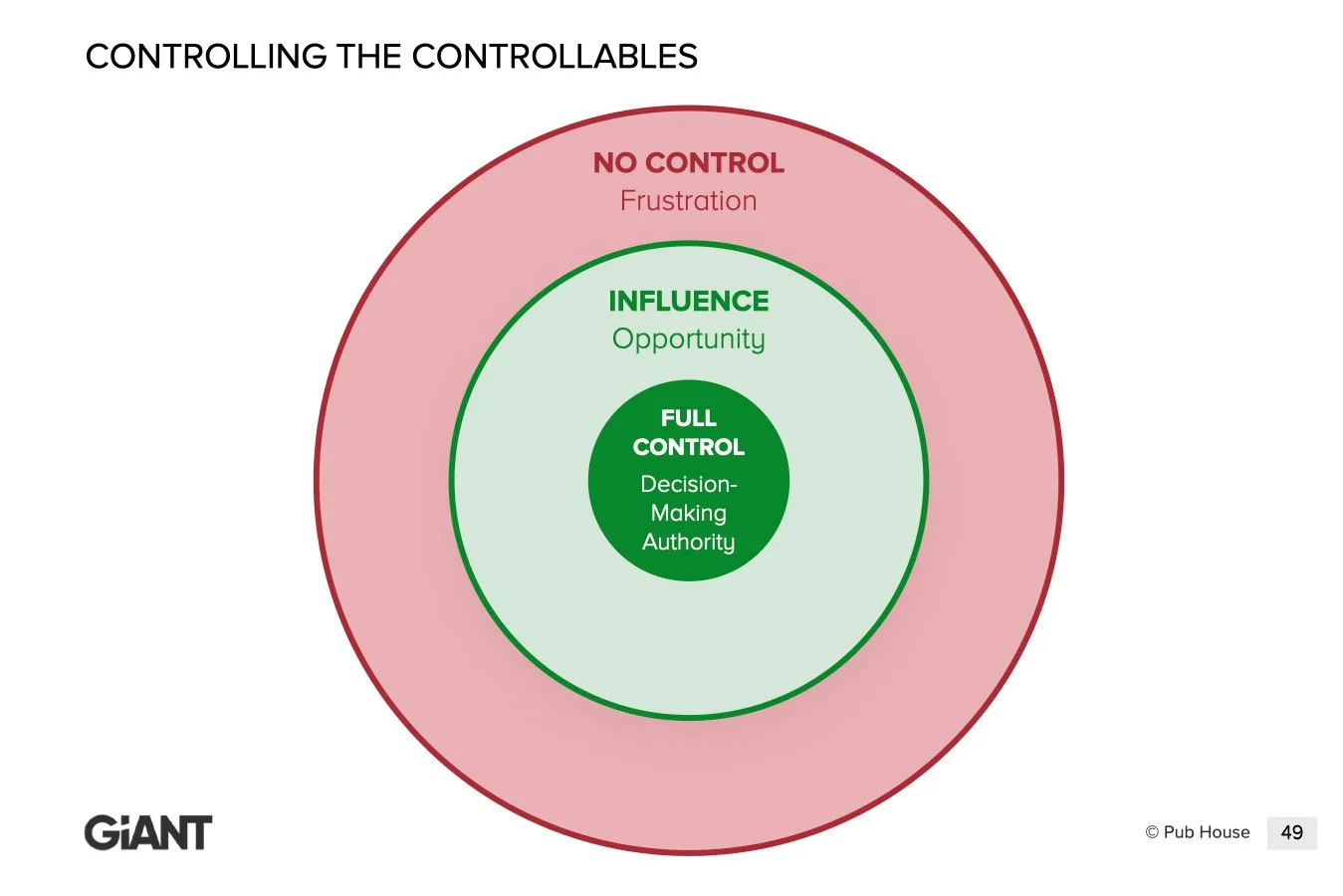Leading Through the Fog of War
Welcome to another Toolkit Tuesday! Every week, our goal is to give you a practical leadership tool to put in your toolkit.
So, there I was, leading a mission deep into enemy territory, tasked with infiltrating a team of Danish Special Forces in Afghanistan. It was the early years of the war, and as a flight lead, I quickly learned that the line between what I could control and what I couldn’t was razor thin.
Most of my control came during the planning phase. This is where I could shape the mission – choosing routes to avoid known enemy positions, coordinating air refueling and setting up contingency plans. Once we took off, though, we became subject to a whole host of variables I had zero control over – the enemy’s actions, rapidly changing weather, the timing of other supporting aircraft and whether our refueling tanker would actually be where it was supposed to be six hours into the flight.
If I allowed myself to obsess over these uncontrollable elements – whether the tanker would arrive on time or if the weather would hold – I’d be robbing myself of the mental capacity needed to focus on the mission right in front of me. I had a flight to lead, fuel levels to monitor and a team counting on me to make real-time decisions about threats, terrain and timing. Survival demanded that I stay fully present and focused on what I could control.
The Challenge
As leaders, it’s easy to get overwhelmed by things outside our control – market shifts, competitor moves, client decisions, or economic uncertainty. When we focus too much on these factors, we lose the mental bandwidth to address what’s actually within our power.
This leads to frustration, missed opportunities and diminished impact. In high-stakes moments, this distraction can mean the difference between success and failure.
The Tool: Controlling the Controllables
This tool is about more than just staying calm in the chaos – it’s about deliberately focusing your energy where it can have the most impact. It involves three key elements:
Control What You Can (Dark Green) – Focus your energy on what is directly within your power, like your decisions, actions, and mindset. This is where you can shape outcomes by removing unnecessary distractions and making intentional choices.
Influence What You Can (Light Green) – Use your expertise, relationships, and situational awareness to shape outcomes, even when you don’t have full control. This is where your influence can make a significant impact, even in unpredictable environments.
Let Go of the Rest (Red) – Free yourself from the mental drain of worrying about things you cannot control. This step is about releasing your mind to focus on what truly matters in the moment, without being paralyzed by uncertainty.
Together, these three elements form a powerful framework for leaders facing uncertainty. They allow you to remain clear-headed, decisive, and focused, even in the fog of war. Mastering this mindset means you stop wasting time and energy on distractions, and instead direct your effort toward meaningful, impactful action.
Why This Matters Now
Leaders who master this mindset gain clarity, reduce stress, and improve decision-making. They become proactive problem solvers rather than passive reactors.
Just like that mission in Afghanistan, success often hinges on controlling the controllables and influencing what you can, while letting go of the rest. In high-pressure environments, this is the difference between merely surviving and truly thriving.
The Result
When you focus on what you can control and influence, you reduce anxiety, improve decision-making, and create more consistent, impactful results. This approach builds confidence and empowers those around you to take ownership of their roles as well.
Take Action
Take a moment today to identify where your focus is going. Are you worrying about things outside your control, or are you investing your energy in what you can control and influence?
Start small: Make a list of the top three things within your control this week. Focus on that and not the distractions.
Book a strategy session: Let’s work together to build a custom leadership plan that focuses on what you can control and influence, so you can fight for the highest possible good of your team.
Closing the Loop
Ultimately, that mission was a success, not because everything went perfectly, but because we focused on controlling what we could, influenced what we had a hand in, and set aside the rest. We stayed present in the moment, made better decisions, and executed our mission without letting distractions cloud our judgment. In the fog of war, clarity is power.
Lead hard.


